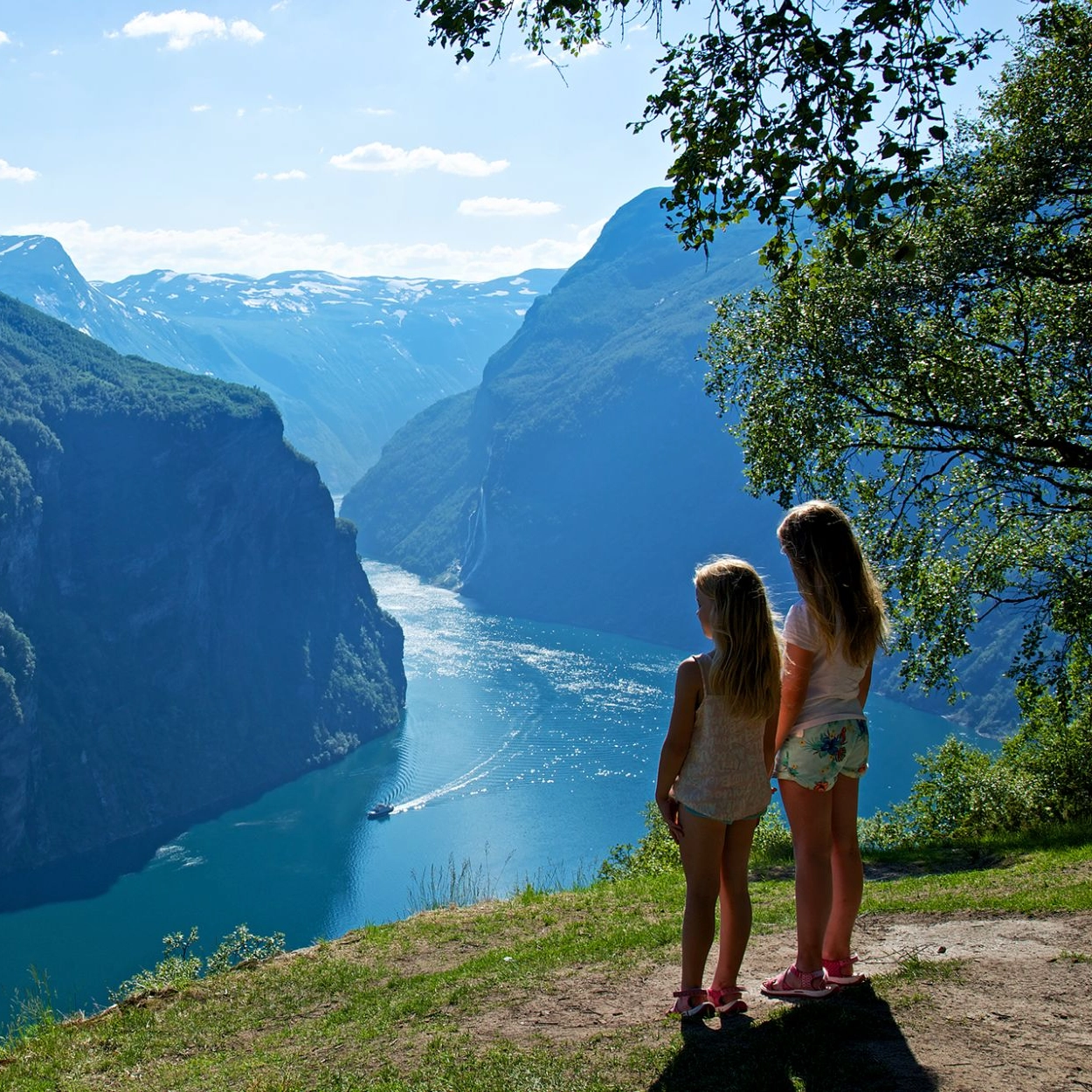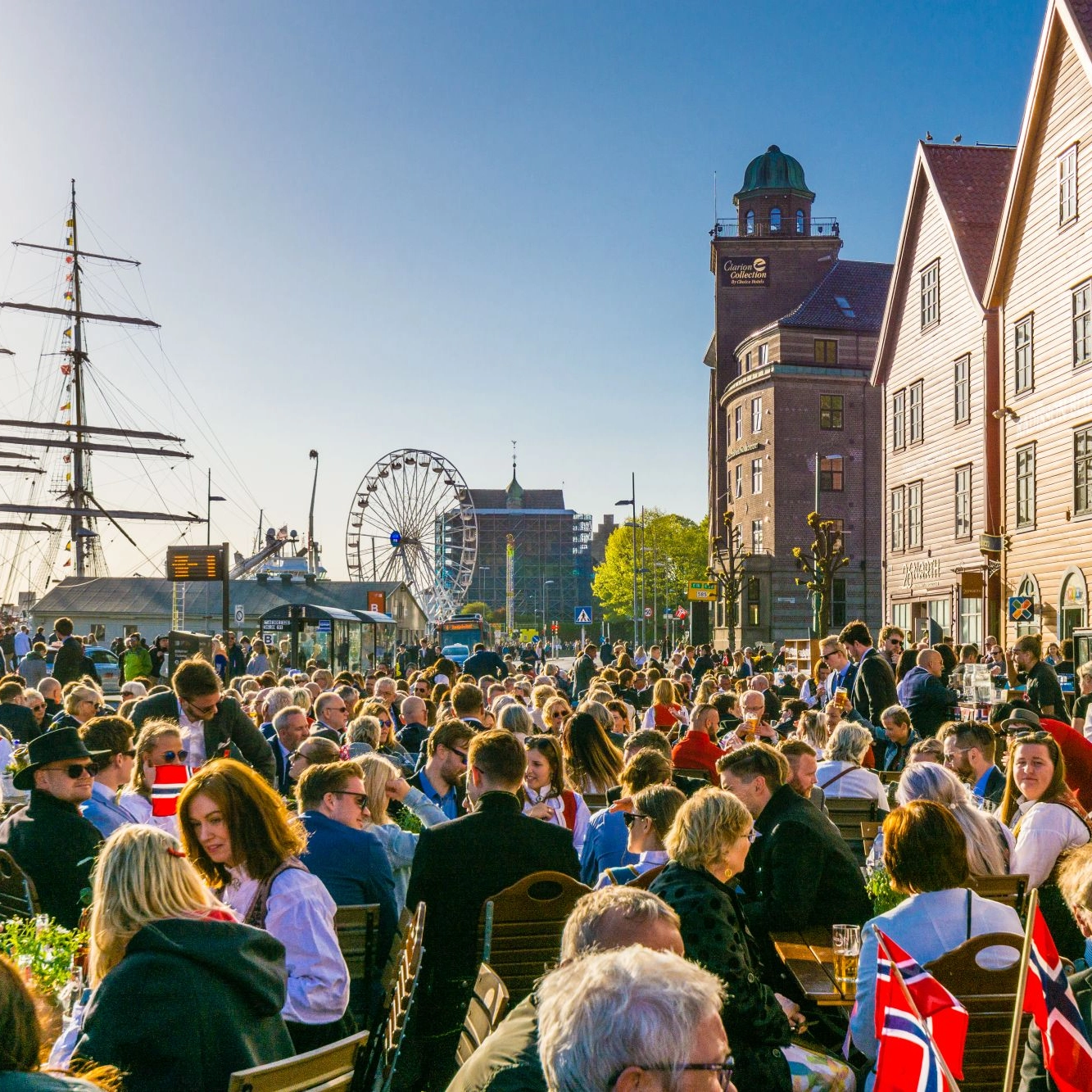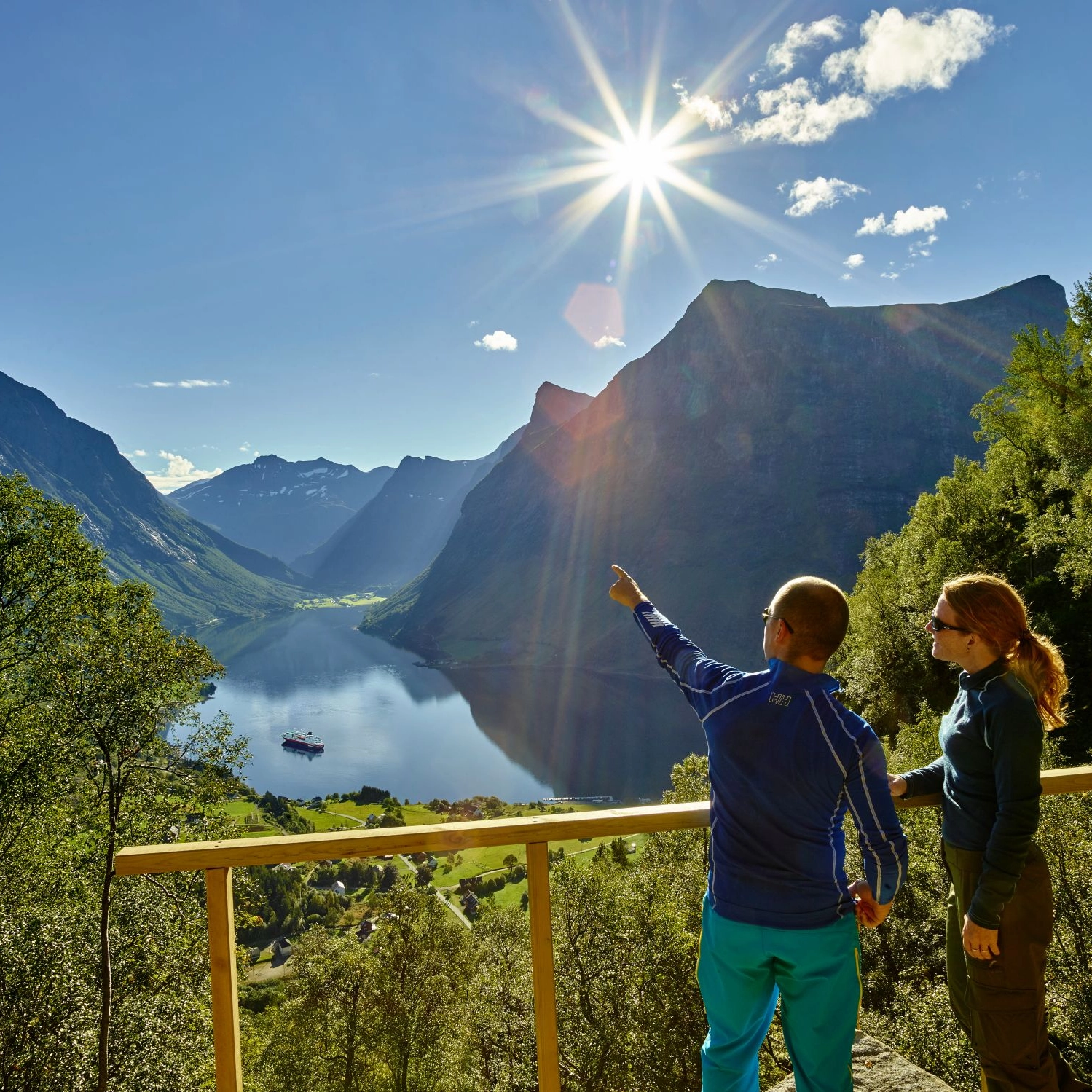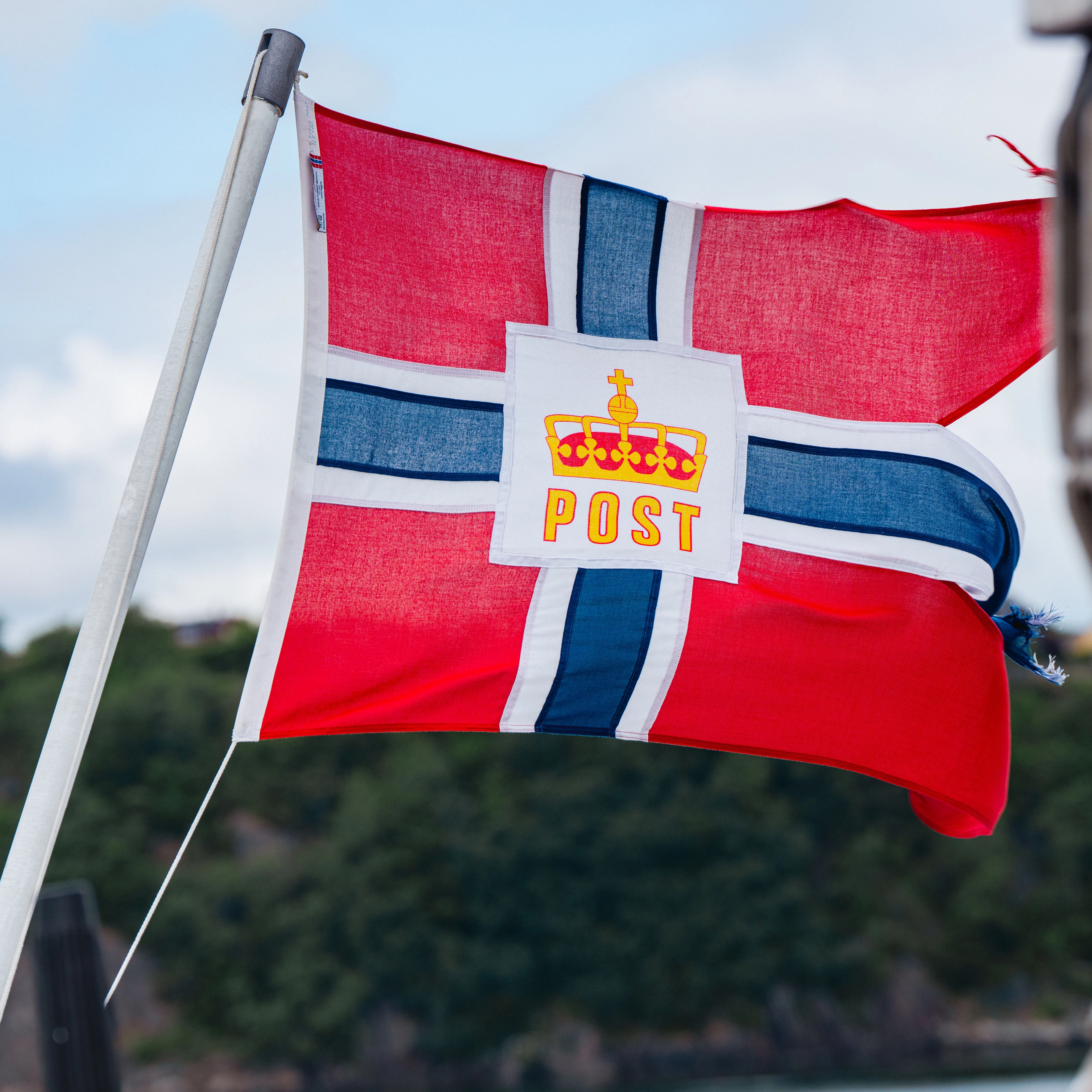A History of Tourism in Norway
Norway has been a top travel destination for a long time, with millions of people around the world ranking our beautiful country as one of their most desired places to visit. For many people, spending time in Norway is at the very top of their bucket list. But tourism to Norway is quite different now from when tourists first started coming here for their holidays – so let’s take a look back at the history of tourism in Norway!

These days, it’s easy to find fantastic new travel destinations with so many beautiful photos and videos posted online. But historically, discovering new places you’d like to travel to was more difficult, and many international travelers weren’t aware of what Norway had to offer as a destination. Tourists began coming to Norway in the 1820 and 1830s, but the country wasn’t prepared for tourism at that stage with limited options for overnight stays. This quickly began to change as Norway saw a greater influx of travelers towards the end of the 19th century, and the country began placing a greater focus on providing hospitality and travel experiences for tourists.

The historic travel agency Thomas Cook created the Discovery Route in the 1880s, and it was the first package holiday to be sold in Fjord Norway. The first explorers traveling the Discovery Route in Norway at the time journeyed by horse and carriage on land and steamboats on the country’s many fjords and lakes. Wealthy Englishmen were the biggest group of early tourists to Norway, as well as Germans, and they were drawn in by opportunities for walks and hikes in Norway’s spectacular mountains as well as fishing and hunting. Word quickly spread and tourists flocked to Norway keen to see the beautiful nature and unforgettable natural experiences the country had to offer. In fact, the well-known writer and explorer E. J. Goodman called the Discovery Route “The Best Tour of Norway” after he traveled it in the 1890s.
At the time, Norway wasn’t a wealthy country and the big cities like Kristiania (now known as Oslo) and Bergen weren’t travel destinations like they are today – they were mainly used for transit, with few attractions to draw tourists in. It was the landscapes and natural experiences that attracted travelers. Norway’s spectacular natural beauty awed visitors, who were taken in by the unusual scenery – towering mountains, narrow fjords, cascading waterfalls, and mysterious natural wonders like the midnight sun and the northern lights.

As tourism to Norway grew, hotels were established and opportunities for great travel experiences were created, and Norwegians also began to take pride in their nation’s stunning nature and sights. In 1905, the Norwegian railway NSB created the first advertisement for travel to Norway. Featuring illustrations of mountains, the midnight sun, and the traditional Stave church, the ad contributed to the image of Norway as a beautiful travel destination for international travelers.

Perhaps unsurprisingly, the fjords have been a very popular destination since tourism to Norway began. One of the most visited places among early travelers to Norway was the idyllic village of Balestrand on the Sognefjord. Known for its stunning light and scenic beauty, this historic village attracted plenty of painters from both near and far, and the paintings that were produced here were sent all over the world. The historic Kviknes Hotel, located at the waterfront and dating back to the 18th century, has long been a popular choice for travelers to this beautiful region.

It wasn’t until after World War II that Norway began to see mass tourism to its shores. Since then, tourism to Norway has gone from strength to strength. The international travel community quickly recognised the many merits of Norway as a destination. In fact, Norway has had nine notable landmarks and areas placed on the UNESCO World Heritage List, including the Geirangerfjord and the Nærøyfjord in Western Norway, the historic mining town of Røros, the stunning Vega islands, the Urnes Stave Church dating back to 1140 and the iconic Bryggen in Bergen.

These days, travelers to Norway may want to connect with spectacular nature, visit historical sites, try the local food and drinks, and take in contemporary Scandinavian art and design. Finding time for everything you’d like to do can be challenging. By taking part in a tour with hand-picked itineraries and experiences, travelers can get to experience all the best of what Norway has to offer in one trip. There are plenty of fun activities and experiences to take part in along the way!
Get to know the Norwegians
The typical Norwegian cherishes nature and embraces the great outdoors. Minimalist in design and lifestyle, they prioritize practicality. Norwegians honor heritage and folklore, fostering a vibrant, inclusive society that blends tradition with a modern, open-minded outlook while embracing sustainability.

Traditional Norwegian food
Norway has a lot of interesting traditional food, and any travelers visiting Norway would do well to sample some of the local cuisines. Culinary traditions in Norway have been dominated by meat, fish, and seafood that could be hunted or caught. These days the Norwegian food space represents an interesting mix of old and new due to culinary influences from all over the world.

Why Norway Is Perfect for Adventure Travelers
Norway is often referred to as a dream destination for adventure travelers. The varied Norwegian landscapes provide adventurers with a rich diversity of outdoor activities to choose from throughout the year, including hiking, biking, skiing, kayaking, and rock climbing, to name a few. There's no shortage of thrilling experiences to be had in Norway's great outdoors!

The 17th of May – Norway’s National Day
The 17th of May is Norway’s national day, and what a party it is! Though many countries mark their national day with military parades, Norway’s celebration is lighthearted and fun, with a special focus on kids enjoying this special day. In this article, we’ll tell you all about Norway’s Constitution Day, how it began, and how it’s celebrated across Norway today.

Why a Scanditour is the New Eurotour
Done the whole Eurotrip thing? Looking for some fresh insight into where your next travel adventure should be? Head over to Scandinavia, and Norway in particular.

What is ‘slow travel’ and why Norway ticks all the boxes
Have you ever felt more exhausted after a trip than before you left? Then you have probably done the exact opposite of slow travel! When slow traveling, there is no need for a vacation after your vacation.It is not about "likes" that generate hotspots on Instagram and overwhelmingly long bucket lists.

How to stay warm and koselig this winter
Anyone who has ever taken a trip to Norway during the winter season knows just how vicious the Norwegian winters have the potential to be. This is especially true for Northern Norway where you can find really cold temperatures. So how do Norwegians tolerate the cold and long winter? With the “philophy of koselig” of course.

Learn Norwegian words and phrases before your trip
If you’re planning a trip to Norway, you might be interested in learning a few Norwegian words and phrases. It can be really helpful to have some handy phrases up your sleeve for communicating with locals during your upcoming trip to Norway, so we’ve prepared a great guide that will help you learn the lingo before you arrive!

Sustainable travel in Norway
These days, more and more travellers are focused on sustainable travel. People want to experience their dream destinations while minimizing the negative impact on the local environment and community. Fortunately, Norway is one of the most sustainable countries in the world, and plenty of measures have been taken to ensure that travellers can enjoy an eco-friendly Norwegian holiday.

Traditional Norwegian food
Norway has a lot of interesting traditional food, and any travelers visiting Norway would do well to sample some of the local cuisines. Culinary traditions in Norway have been dominated by meat, fish, and seafood that could be hunted or caught. These days the Norwegian food space represents an interesting mix of old and new due to culinary influences from all over the world.

Why Norway Is Perfect for Adventure Travelers
Norway is often referred to as a dream destination for adventure travelers. The varied Norwegian landscapes provide adventurers with a rich diversity of outdoor activities to choose from throughout the year, including hiking, biking, skiing, kayaking, and rock climbing, to name a few. There's no shortage of thrilling experiences to be had in Norway's great outdoors!

The 17th of May – Norway’s National Day
The 17th of May is Norway’s national day, and what a party it is! Though many countries mark their national day with military parades, Norway’s celebration is lighthearted and fun, with a special focus on kids enjoying this special day. In this article, we’ll tell you all about Norway’s Constitution Day, how it began, and how it’s celebrated across Norway today.

Why a Scanditour is the New Eurotour
Done the whole Eurotrip thing? Looking for some fresh insight into where your next travel adventure should be? Head over to Scandinavia, and Norway in particular.

What is ‘slow travel’ and why Norway ticks all the boxes
Have you ever felt more exhausted after a trip than before you left? Then you have probably done the exact opposite of slow travel! When slow traveling, there is no need for a vacation after your vacation.It is not about "likes" that generate hotspots on Instagram and overwhelmingly long bucket lists.

How to stay warm and koselig this winter
Anyone who has ever taken a trip to Norway during the winter season knows just how vicious the Norwegian winters have the potential to be. This is especially true for Northern Norway where you can find really cold temperatures. So how do Norwegians tolerate the cold and long winter? With the “philophy of koselig” of course.

Learn Norwegian words and phrases before your trip
If you’re planning a trip to Norway, you might be interested in learning a few Norwegian words and phrases. It can be really helpful to have some handy phrases up your sleeve for communicating with locals during your upcoming trip to Norway, so we’ve prepared a great guide that will help you learn the lingo before you arrive!

Sustainable travel in Norway
These days, more and more travellers are focused on sustainable travel. People want to experience their dream destinations while minimizing the negative impact on the local environment and community. Fortunately, Norway is one of the most sustainable countries in the world, and plenty of measures have been taken to ensure that travellers can enjoy an eco-friendly Norwegian holiday.